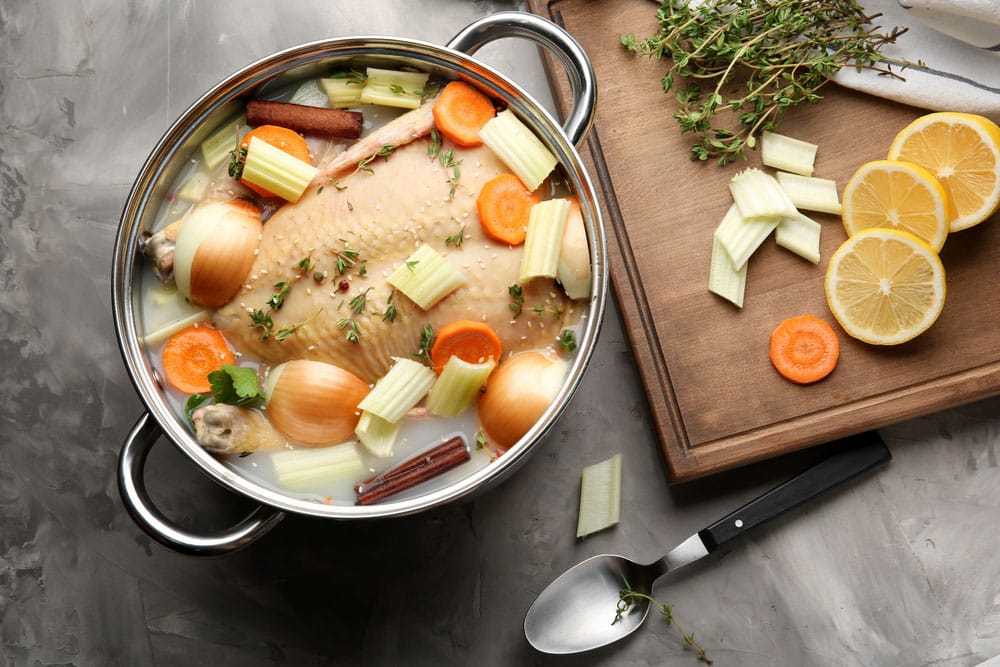
Brining is an excellent procedure for people who don’t like using dry meat in their recipes. Since brining involves submerging the chicken in a salty liquid, the process not only adds moisture but also flavor to the dish.
So, if you want to improve the general softness and overall texture of the chicken, then our top brining method will help you achieve exceptional results.
You may wonder whether you should season chicken after the brining process to add additional flavor. We have the answers you need!
Do You Season Chicken After Brining?
The short answer here is yes! Even though you’re using a predominantly salty mixture to create the brine, you can still season your chicken with dry ingredients to add to the flavor or soak out some of the moisture.
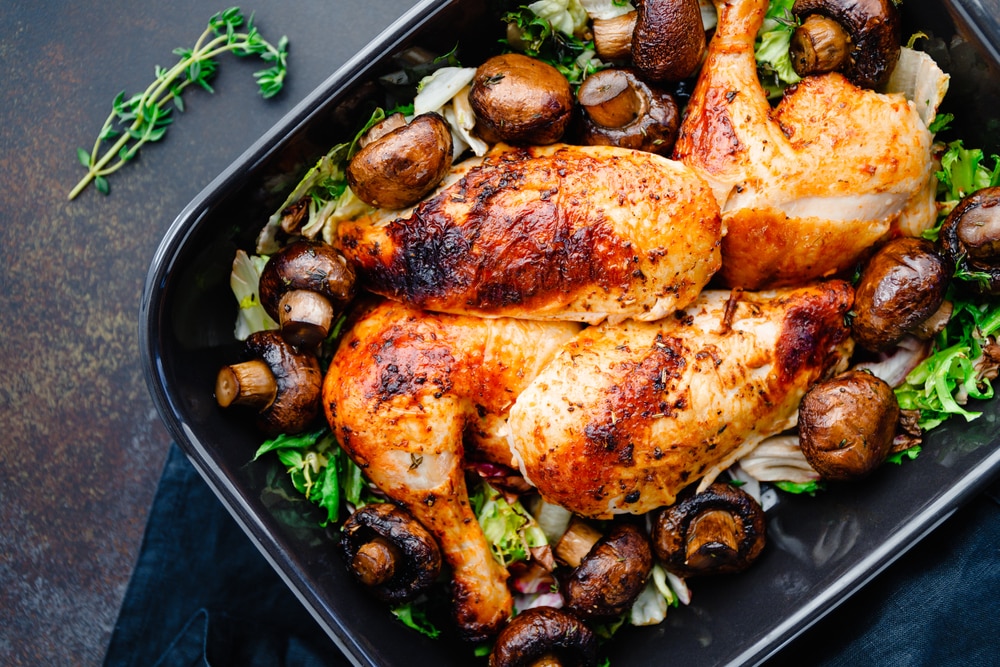
However, it’s important to choose types of seasonings that don’t already have a high salt content. This is because the salt you used to create the original brine would have been absorbed into the chicken. Adding a seasoning with a high salt content may make the chicken too salty.
Adding Sauces
On the other hand, if you prefer using different types of sauces for seasoning the chicken after the brining process, then it may be necessary to dry out the chicken before adding anything else. To do this, follow these easy steps:
- Place the chicken on a rack with a container underneath the catch any drippings
- Put the chicken in the fridge for about an hour—the timing may vary, depending on the type of sauce you’re going to use
- Once the moisture levels in the chicken drop to provide your desired texture, simply cover the chicken with the sauce you prefer
Modified Brining
Some people, however, prefer to modify the brining solution to introduce unique flavors to their recipes.
With that said, if you don’t want to bother with adding seasoning after the brining process, you can simply add the various ingredients and seasonings directly to the brining mixture.
Doing that will cause the new flavors to get absorbed directly into the chicken along with the original salt. After the brining process is complete, you can dry the chicken for a short period before cooking, frying, or roasting it.
Whether or not you should season the chicken after the brining process depends entirely on the type of flavor you’re trying to create. For an intense salty flavor, using a salty seasoning is perfect.
However, to avoid this outcome, consider a seasoning with less salt content as well as adding it directly to the brining mixture.
What do You Need for a Tasty Chicken Brine?
Essentially, chicken brine is simply a mixture of water and salt. Everything else you add is simply just to create different flavorings, depending on the recipe requirements or the dish you’re trying to create.
If you’re not sure what flavors to consider, here are a few tasty suggestions.
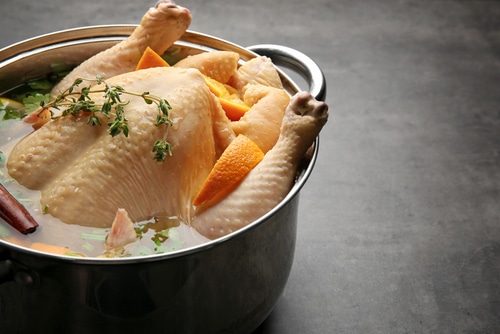
- Salt and water: These two ingredients form the brine and are non-negotiable in any brining process
- Honey: A common flavorant added to chicken if you want a sweet flavor or if you want sticky pieces—you can substitute with sugar if you don’t have honey
- Peppercorns: These add a peppery flavor and can be substituted with ground pepper
- Blend of herbs: You can create your own blend of herbs based on your favorites—the most popular used with chicken include parsley, rosemary, and thyme which can all be used fresh or dried
- Fresh lemons, bay leaves, mustard, and garlic: For additional flavor, any of these (or a combination of these) ingredients can add a tasty flavor to your chicken—use as a marinade or sauce
- Hot sauce, garlic, brown sugar: If you want a spicy flavor in your roast chicken, it’s recommended that you make a seasoning mixture using hot sauce, garlic, and brown sugar
Quickest Way to Brine Chicken
If you’re wondering what the correct way to brine chicken is, here’s all you need to know:
- Choose the ingredients you want to use in the brine mixture
- If you’re using lemon, you can either use lemon juice or for a fresher, stronger flavor, cut a few fresh lemons in half and place them in the mixture
- Bring all these ingredients to a boil by adding them to some water—to dissolve the salt and extract the flavor from the seasoning
- Add some cold water to reduce the temperature and then refrigerate until the mixture is completely chilled
- Place the chicken upside down (breast and drumsticks facing down) and brine for about 12 hours in the fridge (some recipes have been known to suggest one to six hours, so, it really depends on you and how flavorsome you want your chicken)
- Pat dry to remove excess moisture
- Brush with butter (you can add garlic to the butter for added flavor)
- Roast for as long as your recipe recommends (generally, a 2 kg/4lb brined chicken roasts for about 60 minutes at 180°C/350°F or until the juices run clear)
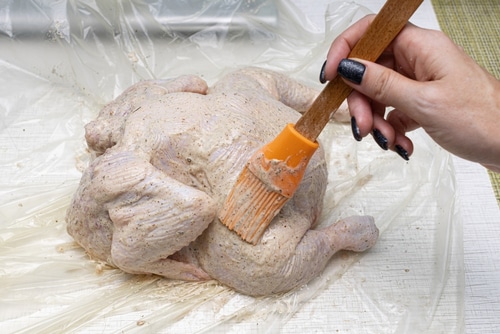
What is the Difference Between Wet and Dry Brine?
If you’ve recently started reading up on brining, then you might have seen references to both dry and wet brine. What is the difference and how do you know which one to use?
Wet Brine
Essentially, a wet brine refers to using the salt solution we’ve discussed up to this point. Here you usually use about 5-8% salt. During the wet brine process, the chicken or turkey is placed in the fridge as a cold solution is needed to infuse the flavor.
The cold temperature also prevents any bacteria growth. Before roasting, the skin and cavities need to be dry to ensure the skin browns and becomes crispy.
Dry Brine
This process refers to using salt and other seasonings to flavor the chicken or turkey. However, the meat doesn’t stay submerged in any liquid.
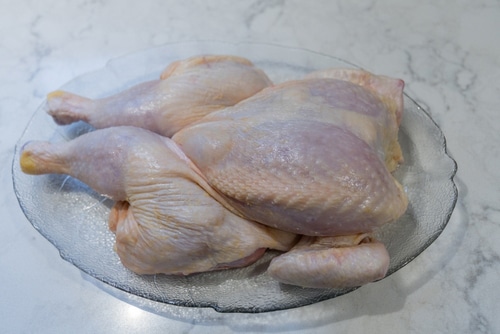
The salt and seasoning create a concentrated brine that breaks down the protein in the muscle of the meat. Juices are released, ensuring the meat isn’t dry or bland.
Is Brining the Same as Marinating?
Essentially, brining and marinating may seem like the same thing because the meat is left to soak in a liquid for a specified time. However, the key difference is that with brining there is a much higher liquid-to-meat ratio.
Usually, a whole chicken is submerged in the brining liquid. With marinade, there is considerably less liquid, and the chicken is coated with the marinade mixture, rather than being submerged in it.
Is the Brining Process Only Best for Chicken?
The good news is that brining isn’t only restricted to chicken. Many cooks often use brining for pork and different-sized turkeys. For the most part, brining is excellent for ensuring that white meat doesn’t dry out.
To Conclude
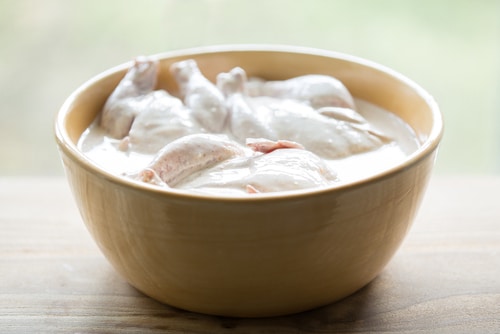
Dry seasoning with little to no amounts of salt is the best option for bring out the delicious taste of your recipe.
Always check the salt content in any seasoning mixture before adding it to your dish. Consider your side dishes to help you choose the best seasonings and impress your guests.
